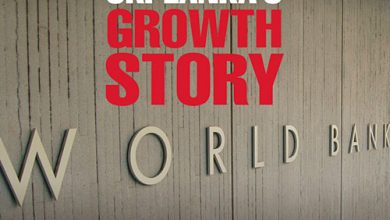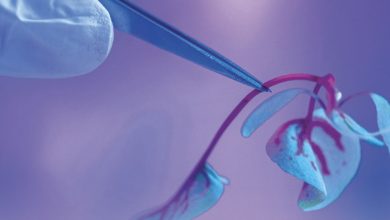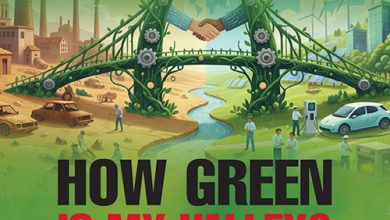AGRICULTURAL TRENDS
FARMING WITHOUT FARMLAND
Akila Wijerathna discusses the value of controlled-environment agriculture
Controlled-environment agriculture (CEA) is an emerging future crop system that enables cultivating high value crops on a much smaller stretch of land – approximately five percent of the land required for conventional agriculture. And having no reliance on seasonality, it amplifies growing cycles while concurrently cutting food mileage.
CEA ranges from simple shade structures, growth chambers and greenhouses to indoor or vertical farms. Indoor and vertical farming, greenhouses, protected cropping and automated plant growing systems are diverse growth environments for this form of agriculture.
Products of controlled-environment agriculture have naturally longer shelf lives. This cuts food waste and eliminates ecotoxicity for people and planet since no pesticides or harmful chemicals are required. In addition, soil-less cultivation techniques have attracted increased attention to grow horticultural crops efficiently without taking up more land.
These controlled environment systems are less vulnerable to climate change and particularly suited to urban farming as part of a shift to more localised circular food systems.
Soil-less culture systems are recognised as a viable method of producing vegetables (tomatoes, lettuce, aubergines, spinach, melons, cucumbers and peppers, for instance) and ornamental crops such as herbs, roses, freesia and foliage plants. In addition, some fruit crops such as strawberries and raspberries are well suited to soil-less culture systems.
This system offers an artificial means of providing plants with support, and a reservoir for nutrients and water. The retention of nutrients and water can be improved by using peat, vermiculite or bark chips. These are the most commonly used materials; but others such as rice hulls, bagasse (sugarcane refuse), sedge peat and sawdust are used sometimes as constituents in soil-less mixes.
Hydroponics and substrate culture are two production systems applied in soil-less culture. The most common water culture systems in use today are the nutrient film technique, floating raft method and aeroponic system, and are often reserved for those methods where plants are grown in water with no supporting medium for the roots.
The technique whereby plant roots are suspended in a static, continuously aerated nutrient solution, or a continuous flow or mist of nutrient solution is commonly referred to as hydroponics.
Substrate culture systems use rock or stone wool, oasis cubes, vermiculite, perlite, coir, peat, composted bark, pea gravel, sand, expanded clay, lava rock, fibreglass insulation, sawdust, pumice, foam chips, polyurethane grow slabs and rice hulls, to provide both physical support and the root environment required.
In this type of system, the role of the medium is to support the plant’s roots, and provide an environment for water and necessary nutrients. Substrate culture is generally used for row crops such as fruit vegetables (Solanaceae and Cucurbitaceae), strawberries and cut flowers (roses, Gerberas and anthuriums).
CEA addresses the downside of controlled indoor methods of growing crops, which is high energy consumption due to the inability of crops to soak up natural sunlight. Light, temperature, relative humidity and CO2 around the plants can be monitored using advanced technology and data, and the system can thrive by receiving sustainable solutions for high value crops.
Fully automated plant growth systems are the most advanced CEA environment. These continue to grow plants for months without constant maintenance – completely self-regulating water, nutrient concentration, pH levels and light. The system will also give feedback on CO2 levels, humidity and temperature, using growroom climate controllers and the IoT network. This type of system would help farmers to grow crops in remote areas and deserts.
There are efforts to make controlled agriculture more energy efficient through renewable electricity sources for lighting and the general use of natural gas for heating. But running a vertical farm often requires a lot of manual labour since such farms are frequently in environments not designed for growing crops. The associated energy and labour costs can contribute significantly to the high prices associated with vertically farmed produce.
Nevertheless, technology is helping decrease the cost of vertical farming and making large-scale urban food production a viable option. The key technologies that are helping make successful vertical farming a reality are growing methods, LEDs and lighting, environmental controls, sensors, automation and container farming.
A major issue for traditional farming is the lack of young farmers because the children of many remaining agriculturists don’t want to take over the farms since they consider it a very tedious job. However, using technology can improve working environments so that young people will be more willing to farm.






